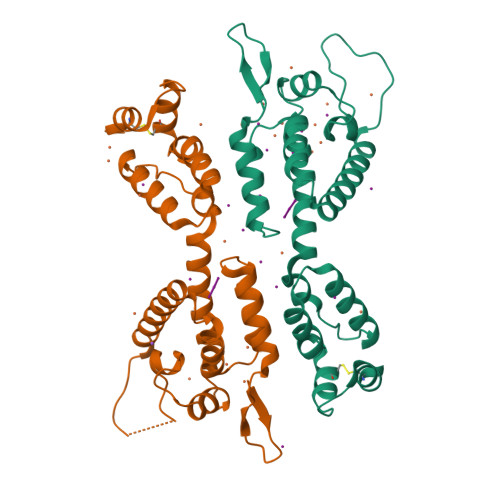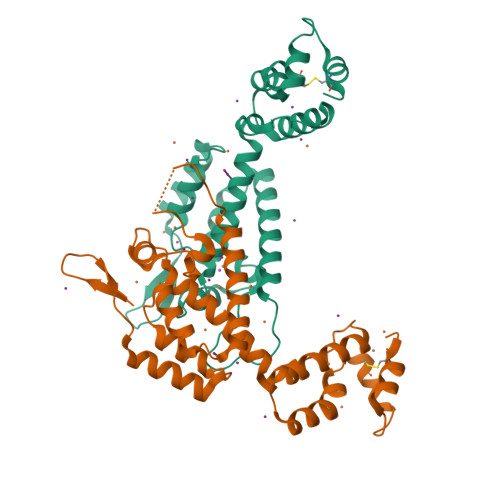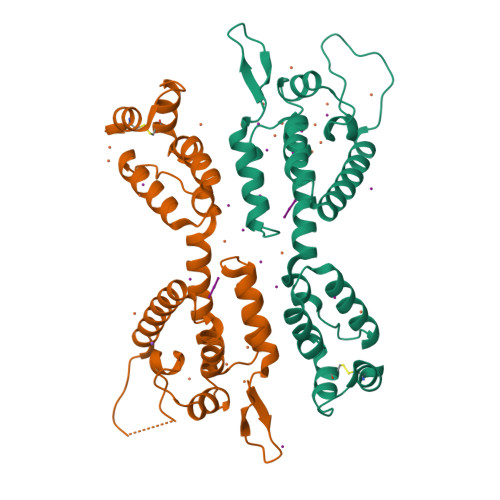Structure of the HIV-1 full-length capsid protein in a conformationally trapped unassembled state induced by small-molecule binding.
Du, S., Betts, L., Yang, R., Shi, H., Concel, J., Ahn, J., Aiken, C., Zhang, P., Yeh, J.I.(2011) J Mol Biology 406: 371-386
- PubMed: 21146540
- DOI: https://doi.org/10.1016/j.jmb.2010.11.027
- Primary Citation of Related Structures:
3NTE - PubMed Abstract:
The capsid (CA) protein plays crucial roles in HIV infection and replication, essential to viral maturation. The absence of high-resolution structural data on unassembled CA hinders the development of antivirals effective in inhibiting assembly. Unlike enzymes that have targetable, functional substrate-binding sites, the CA does not have a known site that affects catalytic or other innate activity, which can be more readily targeted in drug development efforts. We report the crystal structure of the HIV-1 CA, revealing the domain organization in the context of the wild-type full-length (FL) unassembled CA. The FL CA adopts an antiparallel dimer configuration, exhibiting a domain organization sterically incompatible with capsid assembly. A small compound, generated in situ during crystallization, is bound tightly at a hinge site ("H site"), indicating that binding at this interdomain region stabilizes the ADP conformation. Electron microscopy studies on nascent crystals reveal both dimeric and hexameric lattices coexisting within a single condition, in agreement with the interconvertibility of oligomeric forms and supporting the feasibility of promoting assembly-incompetent dimeric states. Solution characterization in the presence of the H-site ligand shows predominantly unassembled dimeric CA, even under conditions that promote assembly. Our structure elucidation of the HIV-1 FL CA and characterization of a potential allosteric binding site provides three-dimensional views of an assembly-defective conformation, a state targeted in, and thus directly relevant to, inhibitor development. Based on our findings, we propose an unprecedented means of preventing CA assembly, by "conformationally trapping" CA in assembly-incompetent conformational states induced by H-site binding.
Organizational Affiliation:
Department of Structural Biology, University of Pittsburgh Medical School, Pittsburgh, PA 15260, USA.























